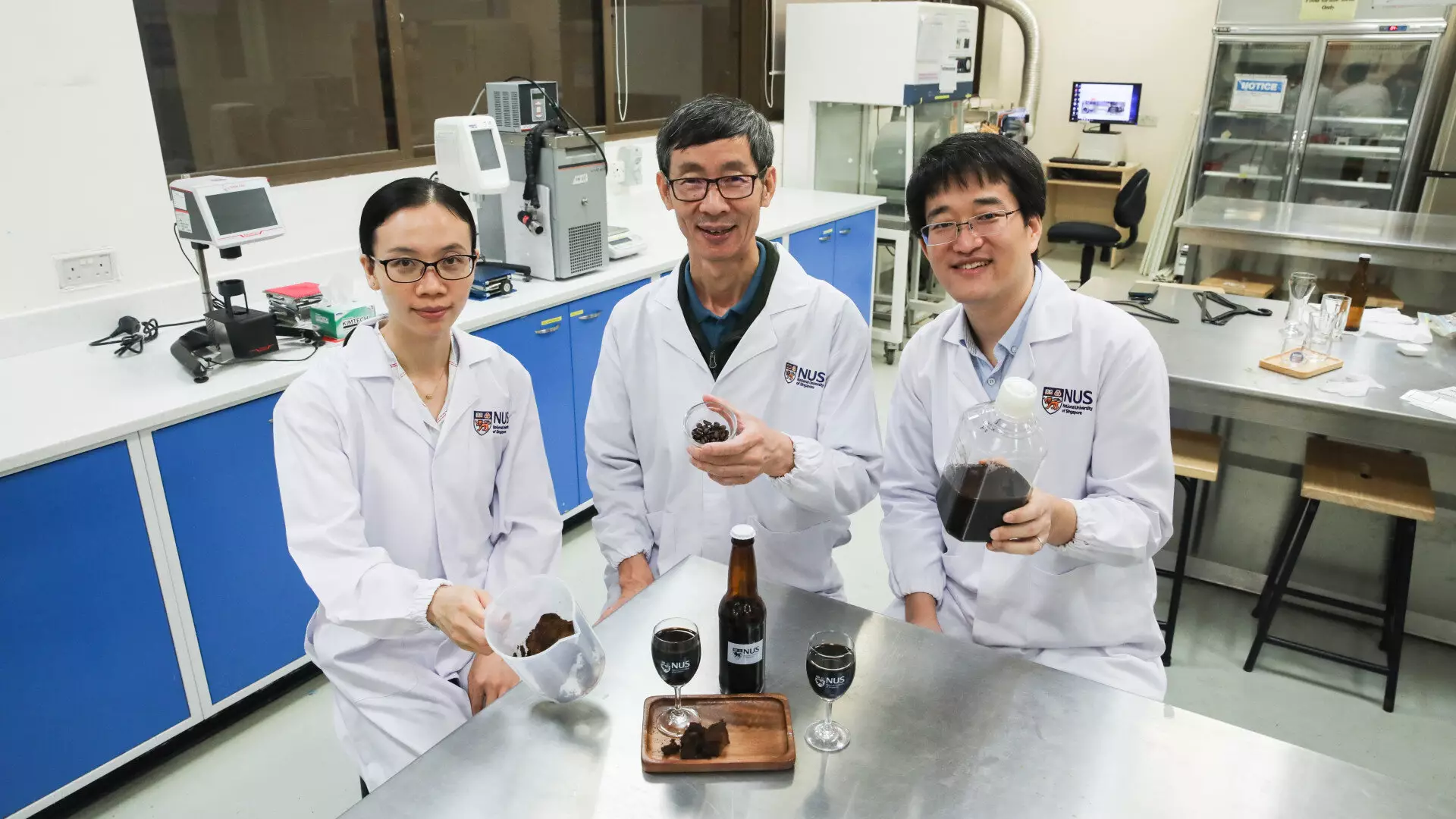Spent coffee grounds (SCG) pose a significant environmental challenge, with almost 6 million metric tons of waste generated globally each year. Recognizing the need for sustainable waste management, researchers are exploring innovative ways to repurpose SCG into value-added products. Led by Associate Professor Liu Shao Quan from the NUS Department of Food Science and Technology, a team of scientists has embarked on a unique journey of creating an alcoholic beverage derived from fermented SCG. By delving into the flavor, aroma, and potential health benefits of this unconventional beverage, their research has opened new doors in the world of coffee waste management.
To create an alcoholic beverage from SCG, the researchers first prepared SCG hydrolysates and then fermented them using a combination of microorganisms, primarily yeasts. Yeasts play a pivotal role in shaping the taste and aroma of alcoholic beverages, influencing their chemical composition and overall quality. Diverging from traditional methods that utilize Saccharomyces yeasts, Assoc Prof Liu and his team embarked on a path of discovery by exploring non-Saccharomyces yeasts. By supplementing yeasts with yeast extracts during the fermentation process, they successfully crafted an SCG-derived alcoholic beverage with a complex flavor profile.
Expanding on their previous study, the NUS team delved deeper into the fermentation process, seeking to improve the smell and taste of the SCG-derived alcoholic beverage. In this quest, they introduced lactic acid bacteria, alongside yeast, as microorganism companions during fermentation. This novel approach resulted in alcoholic beverages with enhanced aroma and taste. By employing a mixture of yeast (Lachancea thermotolerans) and a lactic acid bacterium (Lactiplantibacillus plantarum) to ferment SCG hydrolysates, the team achieved higher contents of compounds related to a pleasant aroma and taste compared to fermentation using only yeast.
Driven by their commitment to uncovering the untapped potential of SCG-derived alcoholic beverages, the NUS team conducted a comprehensive metabolomic analysis. They adopted an advanced analytical technique called liquid chromatography quadrupole time-of-flight mass spectrometry (LCQTOF-MS). By deploying this technique, commonly used for identifying chemical compounds in foods and beverages, the researchers obtained an intricate understanding of the chemical contents of the fermented SCG. Remarkably, this study marked the first time LCQTOF-MS was used to determine the full profile of compounds resulting from the fermentation of SCG by both yeast and bacteria.
Through their meticulous analysis, the research team made a groundbreaking discovery. They found that fermenting SCG hydrolysates with a combination of yeast and bacteria significantly increased the presence of bioactive compounds associated with various health benefits. These compounds encompassed anticancer, anti-inflammatory, and antimicrobial activities. Dr. Liu Yunjiao, the first author of the most recent study, revealed that the team has successfully developed several prototypes of SCG-derived alcoholic beverages. Each prototype possesses its distinct flavor profile, offering options for both coffee enthusiasts and those seeking a milder taste. Importantly, all the prototypes retained compounds known to confer health benefits, such as alkaloids and phenolic acids.
The journey undertaken by Assoc Prof Liu and his team exemplifies the transformative power of innovation and scientific exploration. By creatively repurposing SCG through fermentation, they not only address the mounting waste generated by coffee consumption but also uncover a range of potential health benefits. This sustainable approach contributes to the circular economy, transforming a once-discarded material into a valuable resource. As the world confronts the challenges of waste management and sustainability, the pioneering research on SCG-derived alcoholic beverages offers a glimpse into the possibilities of transforming waste into prosperity. With continued ingenuity and collaboration, the future could see SCG-based products becoming a staple in the fight against waste and environmental degradation.



Leave a Reply